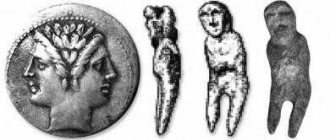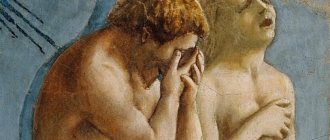The truth about angels and demons
14. Like the Ephesian Christians, how can we be freed from demonic influence today?
14 The Bible teaches us how we can get rid of the influence of demons. For example, it tells about the inhabitants of the city of Ephesus, who, before learning the truth about God, communicated with demons. How did they manage to free themselves from the influence of demons? Acts 19:19 records, “Of those who practiced magic, quite a few gathered up their books and burned them in front of everyone.” They wanted to become Christians and therefore destroyed their books on magic. If anyone wants to become a servant of Jehovah today, he needs to do the same thing—get rid of everything associated with demons. These could be books, magazines, horoscopes, films, music, games or posters - anything that makes witchcraft, dealing with demons or supernatural phenomena seem interesting and harmless. This may also include items that are used as protection from evil (1 Corinthians 10:21).
15. What else do we need to do to fight back Satan and demons?
15 Even years after the Ephesian Christians got rid of books on magic, the apostle Paul encouraged them to continue to fight “evil spiritual forces” (Ephesians 6:12). Why? Because the demons were still trying to harm them. What else did these Christians need to do? The Apostle Paul wrote, “Take up the great shield of faith, with which you will be able to extinguish [or stop] all the flaming arrows of the Evil One” (Ephesians 6:16). Just as a shield protects a warrior, our faith will protect us. If we firmly trust that Jehovah can protect us, we can fight back against Satan and the demons.—Matthew 17:20.
16. What can help us strengthen our faith?
16 What can help us strengthen our faith in Jehovah? It is necessary to read the Bible every day and learn to trust Jehovah. Then Satan and the demons will not be able to harm us (1 John 5:5).
17. How else can we get protection from demons?
17 Ephesus was a city full of demonism, so the Apostle Paul advised the Christians living there to pray “every time” (Ephesians 6:18). This meant that they needed to pray for protection constantly. What about us? We also live in a world full of demonism. Therefore, we also need to ask Jehovah for protection and address him by name in prayer. (Read Proverbs 18:10 .) If we ask Jehovah to deliver us from Satan, he will answer our request. (Psalm 146:19; Matthew 6:13)
18, 19. (a) How can Satan and the demons be defeated? b) What will we learn from the next chapter?
18 So, if we get rid of everything associated with demonism and do not doubt that Jehovah will protect us, we can fight back against Satan and the demons. There is no need to be afraid of them. (Read James 4:7, 8. ) Jehovah is much stronger than demons. Even in the days of Noah, they were punished by God, and in the future he will completely destroy them (Jude 6). Remember that we do not struggle alone—Jehovah protects us through angels.—2 Kings 6:15-17. Be assured that with Jehovah's help you can defeat Satan and the demons. (1 Peter 5:6, 7; 2 Peter 2:9)
19 But if Satan and demons cause so much grief, why hasn't God destroyed them yet? We will learn about this in the next chapter.
What is demonology?
The paranormal science that studies demons is called demonology. With its help, you can not only find out the history of the existence of this or that representative of the dark forces, but also understand how you can get in touch with them using ritual and control them. Christian demonology is not a fairy tale and its study must be approached as responsibly as possible. It is not recommended for people who have mental problems to contact dark forces.
Who are demons?
There are different definitions of demons, for example, they are considered intermediary spirits between the earth and the other world. The Slavs also call them demons, and Christian demonology - fallen angels, who are a barrier between people and God. Many will be surprised by the fact that they can be both good (zudemons) and bad (cacodemons). The word "demon" is "full of wisdom." In Jewish demonology, dark forces are divided into certain classes. Adherents of black magic call on demons to provide them with support and help them fulfill their desire.
Succubi and incubi are female and male demon tempters, which are also not in the Bible.
Succubi and incubi are male and female demon tempters. Belief in them is an echo of many more ancient beliefs about similar seductive entities.
The reasons for intercourse with people among such creatures are different. Someone wants to conceive demonic children, someone steals energy. But all that matters to us is that Christianity does not touch upon this topic. The Bible does not consider it necessary to cover such issues.
Johann Heinrich Fussli "Nightmare".
In this painting, the demon incubus sits on the chest of a sleeping woman. At this moment she has erotic dreams. At the back is a monstrous horse - another demonic creature. Photo: artchive.ru
Planetary correspondences according to Cornelius Agrippa
Ancient occult sources contain information about the spirits that patronize the planets. For example, the demons of the planets were mentioned in the ancient treatise “The Key of Solomon”. Cornelius Agrippa compiled a detailed table of the correspondences of demons to the planets, which can be found in Occult Philosophy, volume 4. The author described the appearance of the creatures, behavioral characteristics and a number of questions that can be addressed to them when called.
If you need to make a love spell or sexual attachment, you turn to the spirits of the planet Venus. If it was necessary to defeat an enemy, they turned to the spirit of the planet Mars. That is, each of the seven planets of the solar system had its own patron demon. When calling entities, all the correspondences specified in the treatise had to be strictly observed. These include the hour of the ceremony, day of the week, precious stone and other attributes.
Demons of gluttony, anger, lies, deception, pride, despondency are personifications of vices
In general, a demon is the Greek name for any spirit, both good and evil. But we have a distorted understanding of this word. There is a belief that demons cause sinful behavior in people. Mentioned:
- the demon of gluttony (aka the demon of gluttony);
- demon of wrath;
- demon of lies and deceit;
- demon of pride;
- demon of vanity;
- demon of despondency.
But this is just a belief. It has nothing to do with Orthodoxy. Christians understand perfectly well that sin lies with man, and one can speak of evil spirits here only as an illustration of the vicious side of a person’s personality.
Elsewhere in the Bible, commentators mistake a man for a demon - the king of Babylon
And one more example of how an unscrupulous commentator can take it out of context:
(Isaiah 14:13–15)
“How you fell from the sky, Lucifer, son of the dawn! crashed to the ground, trampling the nations. And he said in his heart: “I will ascend into heaven, I will exalt my throne above the stars of God, and I will sit on the mountain in the assembly of gods, on the edge of the north; I will ascend to the heights of the clouds, I will be like the Most High “But you have been cast down into hell, into the depths of the underworld.”
It seems like the description is quite demonic. But this is if we take Isaiah’s figurative language out of context. But if you read further, it is stated in plain text that we are talking about a person:
(Isaiah 14:16–17)
“Those who see you peer into you, think about you: “Is this the man who shook the earth, shook kingdoms, made the universe a desert and destroyed its cities, and did not let his captives go home?”
And a little earlier the addressee was specifically indicated:
(Isaiah 14:4)
“You will utter a victory song against the king of Babylon and say: since the tormentor is gone, the robbery has stopped!” .
It is on such misunderstandings and speculations that fallen angels appear in the Bible.
The ranks of demons were required as a counterbalance to the angelic hierarchy
In the 5th–4th centuries, an anonymous text appeared in which the author, known today as Pseudo-Dionysius, describes nine angelic orders.
This text is formally based on the Bible, although it takes many liberties. The additions in it are not based on Scripture or Tradition, and therefore cannot be considered true.
Pseudo-Dionysius reports that there are 9 ranks of angels and gives a list of them:
9 ranks
Christian theologians highlight angels
- seraphim;
- cherubs;
- thrones;
- domination;
- strength;
- authorities;
- beginning;
- archangels;
- angels.
The iconography endowed the seraphim with six wings, the cherubim with four (or six) and four heads. Over time, thrones began to be depicted as wheels. Nothing is known at all about the following ranks. They are mentioned in passing in the New Testament, and it is not said that they are angels.
Pseudo-Dionysius clearly takes liberties with the Holy Scriptures.
A 14th-century Greek depiction of a seraphim, the eldest of the angelic orders. In contrast to such ranks, demonologists tried to develop hierarchies of demons
Archangels are a completely separate case. In the Bible, only one is named as such - Michael (Gabriel is simply an angel). And it is said that he is chief over all the angels. And in this order there are seven more leading ranks above him.
But, be that as it may, the hierarchy of demons is a reaction of demonologists to the idea of ranks of angels. Like, if the light has its own army, then the darkness must have one.
Nine Demonic Ranks
Some demonologists have suggested that the demonic hierarchy copies the angelic one and contains nine ranks:
- pseudo-gods led by Beelzebub;
- spirits of lies led by Python;
- the inventors of evil deeds, led by Belial;
- the Avengers led by Asmodeus;
- deceivers led by Satan;
- causing disasters and infection, led by Merezin;
- furies led by Abaddon;
- accusers led by Astaroth;
- tempters and spiteful critics led by Mammon.
Pseudo-gods are those who pretend to be the true God. These include the entire Greek pantheon and pagan deities.
The job of the spirits of lies is to deceive using fortune telling and prophecy. This continues to this day; a whole army of “clairvoyants” is leading the people into demonic delusion and delusion. All kinds of fortune tellers “from God”, soothsayers and soothsayers lead people away from the truth, passing off lies as truth.
The task of the inventors of evil deeds is to evade the fulfillment of God's commandments. To do this, they created many varieties of vicious arts and activities.
The task of avengers and punishers is to make people live with thoughts of retribution instead of fulfilling the commandment of love and forgiveness. Demons convince them that it is necessary to take revenge on someone who deserves it.
Deceivers deceive humanity with false miracles. Their task is to lead away from the truth. They may take the form of just a person with a gift from God, but sometimes they appear to be a messenger of God himself.
Infectious spirits dominate the air, through which they transmit various epidemics and pestilence.
The task of the furies is to incite discord, push people together, and lead them into a state of war and hatred. They work both with individuals and with entire nations and states.
Accusers manage slander, false denunciations, slander and gossip. They lead people into bewilderment, and send all the incriminating evidence to their leader Astaroth.
The task of tempters is to plunge people into sins. The transformation of a God-fearing person into a sinner is considered particularly lucky.
There is no need for a believer to be interested in the hierarchy of demons
As you can see, all ideas about demons are mainly just a distortion of ancient beliefs. Therefore, any attempts to classify them or develop their hierarchy are just speculation and artistic processing.
Holy Scripture encourages a person to spend time on what is truly beneficial to his soul or those around him. And delving into the classification of demons is simply a study of other people’s misconceptions.
Moreover, not a single hierarchy of demons has ever been proposed that would have received any noticeable recognition.
The inhabitants of hell in Christianity are most often the gods of pagan cults
Most often, evil demons appeared when religious traditions changed. Ancient man could not change old deities to new ones in one hour. We see traces of ancient cults in the Bible:
- Golden Taurus . The veneration of large herbivores is the oldest cult on earth. It is a mistake to think that the Jews came up with the Taurus out of boredom while Moses was walking on Mount Sinai. On the contrary, archeology proves that such Taurus are the oldest objects of veneration.
- Copper Serpent . Another ancient deity. Traces of it are lost in prehistoric times. It is obvious and natural that the tempting serpent is another projection of this deity onto the Old Testament text.
Baal, Astarte, and the Golden Calf from the Bible are all ancient deities of other cults.
In addition to these very old deities, others are found in the Holy Scriptures: Astarte, Baal, etc.
This is a standard scheme for religions of those times: you need to declare the deities of all competing and previous traditions to be evil spirits. We can observe this in a relatively recent example of ancient mythology. At first, the cosmic gods were revered there: Uranus, Chaos, Eros. Then they were replaced by titans. And then the Olympian gods began to confront them. At the same time, the titans turned into evil creatures, although the same Greeks had previously worshiped them.
In Zoroastrianism, asuras are good gods and devas are evil. In Hinduism it is the other way around.
In fact, Scripture does not give us a single unique name for evil spirits. All these names are borrowed from other traditions where these deities were revered as good.
Almost everyone the Bible refers to as evil spirits are actually deities of other cults.
For example, Astarte. The photo shows a figurine of a goddess from the 6th century BC. Photo: lunaatra.org



